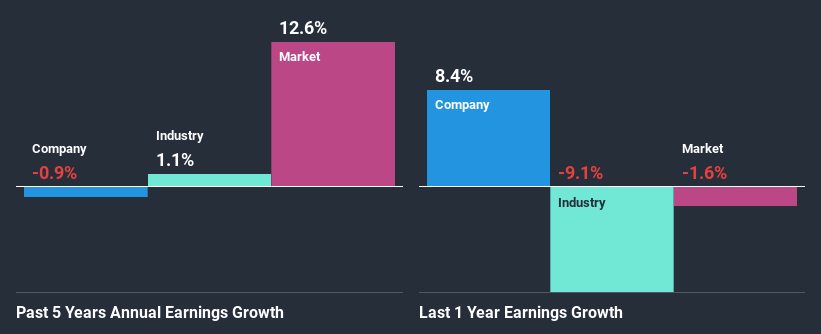Is Tootsie Roll Industries, Inc.'s (NYSE:TR) Stock Price Struggling As A Result Of Its Mixed Financials?

With its stock down 5.6% over the past month, it is easy to disregard Tootsie Roll Industries (NYSE:TR). It is possible that the markets have ignored the company's differing financials and decided to lean-in to the negative sentiment. Long-term fundamentals are usually what drive market outcomes, so it's worth paying close attention. Particularly, we will be paying attention to Tootsie Roll Industries' ROE today.
Return on equity or ROE is an important factor to be considered by a shareholder because it tells them how effectively their capital is being reinvested. Put another way, it reveals the company's success at turning shareholder investments into profits.
See our latest analysis for Tootsie Roll Industries
How Is ROE Calculated?
Return on equity can be calculated by using the formula:
Return on Equity = Net Profit (from continuing operations) ÷ Shareholders' Equity
So, based on the above formula, the ROE for Tootsie Roll Industries is:
8.5% = US$64m ÷ US$752m (Based on the trailing twelve months to June 2020).
The 'return' is the income the business earned over the last year. One way to conceptualize this is that for each $1 of shareholders' capital it has, the company made $0.08 in profit.
What Is The Relationship Between ROE And Earnings Growth?
So far, we've learned that ROE is a measure of a company's profitability. We now need to evaluate how much profit the company reinvests or "retains" for future growth which then gives us an idea about the growth potential of the company. Assuming all else is equal, companies that have both a higher return on equity and higher profit retention are usually the ones that have a higher growth rate when compared to companies that don't have the same features.
Tootsie Roll Industries' Earnings Growth And 8.5% ROE
On the face of it, Tootsie Roll Industries' ROE is not much to talk about. However, its ROE is similar to the industry average of 9.1%, so we won't completely dismiss the company. However, Tootsie Roll Industries has seen a flattish net income growth over the past five years, which is not saying much. Bear in mind, the company's ROE is not very high. Hence, this provides some context to the flat earnings growth seen by the company.
As a next step, we compared Tootsie Roll Industries' net income growth with the industry and discovered that the company's growth is slightly less than the industry average growth of 1.1% in the same period.
The basis for attaching value to a company is, to a great extent, tied to its earnings growth. The investor should try to establish if the expected growth or decline in earnings, whichever the case may be, is priced in. By doing so, they will have an idea if the stock is headed into clear blue waters or if swampy waters await. If you're wondering about Tootsie Roll Industries''s valuation, check out this gauge of its price-to-earnings ratio, as compared to its industry.
Is Tootsie Roll Industries Using Its Retained Earnings Effectively?
Despite having a moderate three-year median payout ratio of 35% (meaning the company retains65% of profits) in the last three-year period, Tootsie Roll Industries' earnings growth was more or les flat. Therefore, there might be some other reasons to explain the lack in that respect. For example, the business could be in decline.
Additionally, Tootsie Roll Industries has paid dividends over a period of at least ten years, which means that the company's management is determined to pay dividends even if it means little to no earnings growth.
Conclusion
Overall, we have mixed feelings about Tootsie Roll Industries. While the company does have a high rate of profit retention, its low rate of return is probably hampering its earnings growth. Up till now, we've only made a short study of the company's growth data. To gain further insights into Tootsie Roll Industries' past profit growth, check out this visualization of past earnings, revenue and cash flows.
This article by Simply Wall St is general in nature. It does not constitute a recommendation to buy or sell any stock, and does not take account of your objectives, or your financial situation. We aim to bring you long-term focused analysis driven by fundamental data. Note that our analysis may not factor in the latest price-sensitive company announcements or qualitative material. Simply Wall St has no position in any stocks mentioned.
Have feedback on this article? Concerned about the content? Get in touch with us directly. Alternatively, email editorial-team@simplywallst.com.

